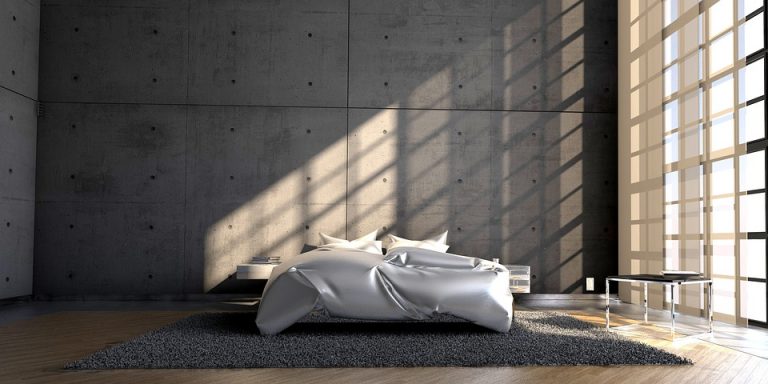DIY furniture projects are the little rebellions that make small spaces live large. They’re hands-on, clever, and they give you furniture that actually fits your life — not the other way around.
You’ve seen the glossy photos. You’ve felt the frustration of trying to fit a sofa into a closet of a room. DIY furniture projects are your answer: functional, stylish, and affordable. They matter because space shapes your day. The right piece can calm your mornings and stretch your evenings. That’s worth doing yourself.
Contents
- DIY Furniture Projects That Maximize Small Spaces
- How To Personalize Your Pieces
- Bottom Line
- FAQ
DIY Furniture Projects That Maximize Small Spaces
Start here: small space work best when each piece earns its keep. When you build or rework furniture, you control scale, storage, and personality. You save money, too. Studies from environmental psychology show that customizing your environment increases satisfaction and reduces clutter stress, which translates into a calmer home.
Below are seven projects you can complete in a weekend or a few afternoons. They’re practical. They’re beautiful. And they’re written in plain language so you’ll actually finish them.
1. Floating Shelves With Hidden Brackets
Floating shelves add surface area without stealing floor space. Use pine boards, a plug-in stud finder, and concealed mounting brackets. Measure twice. Drill once.
Cut boards to size. Sand, stain, or paint in a color that makes your small room feel bigger — pale tones reflect light. Screw in the hidden brackets into studs, slide the shelves on, and finish with books, a lamp, and one plant. This piece is a display and storage solution in one, and it clears clutter off the floor.
Why it works: vertical storage raises the eye and reduces visual weight. You’ll feel like the room breathes again.
2. Murphy Desk That Folds Into A Shelf
A wall-mounted folding desk is a nimble hero. Use plywood, piano hinges, and a simple latch. When you fold it up, it becomes a shelf. When you fold it down, it’s a sturdy workspace.
Plan your dimensions to match your laptop and workspace needs. Add a cable grommet and a small power strip inside the cubby. If you’re worried about strength, add fold-out support arms or a sliding tray under the desk.
This is perfect for a studio or a corner that needs to serve two lives: daytime office and evening living room.
3. Modular Cube Seating With Storage
Think in cubes. Build simple box frames from MDF or plywood covered in foam and fabric. Arrange them as a bench, a chaise, or an ottoman cluster. Make the tops hinged for hidden storage.
Modular pieces adapt to guests, naps, and groceries. Use durable upholstery fabric. Add non-slip pads underneath so the units stay put on hardwood or tile.
This approach gives you seating, storage, and flexibility — three things small spaces need more than anything else.
4. Narrow Console That Doubles As A Vanity
A slim console table can sit behind a sofa or in an entryway. With a mirror and a small drawer, it becomes a vanity. Use tapered legs or hairpin legs to keep the feeling light.
Keep the drawer wide but shallow for makeup or mail. Top with a tray and a lamp. This piece solves two layout problems at once: surface space and a spot to get ready without a full bathroom footprint.
Small touches — gold hardware, a warm stain — make it feel expensive. You did the work. You get the look.
5. Hidden Bed Frame With Under-Bed Storage
A bed with deep drawers or pull-out bins changes everything. Build a platform with reclaimed boards and deep drawers on casters. Keep the mattress height comfortable and add ventilation holes in the drawer boxes to prevent mildew.
If you’re handy, integrate a headboard with built-in shelves and reading lights. This project is about creating a sanctuary that stores blankets, shoes, and seasonal clothing out of sight.
Good sleep and less clutter: that’s the dream.
6. Ladder-Style Kitchen Storage
For tight kitchens, a ladder shelf leans against the wall and stores pots, spices, and cookbooks. Build it narrow and tall. Use rounded rungs for towels and hooks for mugs.
A mobile ladder on casters can move where you need it. Keep the bottom shelf deep for bulky items — mixing bowls, a stand mixer, or a basket of dog food. This project adds surface area without building out into your walkway.
Practical, pretty, and fiercely useful.
7. Convertible Coffee Table That Becomes A Dining Surface
You want a table that understands you. Build a coffee table with hidden fold-out leaves or a lift-top mechanism that raises the surface to dining height. Use gas springs or a simple scissor lift for smooth motion.
Store placemats and chargers inside a hidden compartment. When friends come, you lift, extend, and seat four. When they leave, it folds back into a coffee table that doesn’t dominate your room.
This is the kind of furniture that earns compliments and saves space.
Materials, Tools, And Safety Essentials
Good projects start with a short shopping list. For most builds you’ll need plywood or pine, screws, wood glue, sandpaper, paint or stain, and basic hardware like hinges or brackets. Tools: drill, circular saw, sander, measuring tape, and clamps.
Safety is non-negotiable. Wear eye protection, ear protection, and a dust mask when cutting. Clamp wood to stabilize it. Keep children and pets clear of the workspace. You’ll work faster and sleep better knowing you took basic precautions.
If you’re unsure about electrical installations or load-bearing brackets, consult a licensed professional. It’s worth the money.
Design Tips To Make Small Rooms Feel Bigger
Color and scale are your secret weapons. Choose light, warm colors for large surfaces and add a bold accent on a small piece to create depth. Keep furniture legs visible to show floor space. Mirror placement doubles visual square footage.
Use multi-function pieces to reduce the number of items in the room. When each piece works harder, your life gets simpler. These are not trends — they’re survival tactics for urban living.
Sourcing Materials Without Breaking The Bank
Look beyond new. Reclaimed wood adds character and often costs less than store-bought lumber. Local building salvage yards and online marketplaces are full of surprises.
If you buy new, choose plywood for strength and affordability. Plywood resists warping and gives you a smooth, paintable surface. Spend on hardware that functions well. Cheap hinges fail fast; quality hinges last.
How To Personalize Your Pieces
This is the part where you make it yours. Paint a bold stripe across a desk, line drawers with patterned contact paper, or add a leather pull to a drawer front. Small touches read as intention. They tell people this is a home made with taste.
Invite texture in: woven baskets, brass hardware, and a plant or two. Texture softens hard edges and ties the room together. Your furniture should look like it grew from your life — not out of a catalog.
Bottom Line
Bold moves with small rooms pay off. DIY furniture projects let you tailor scale, storage, and style. You’ll save money, learn a skill, and end up with pieces that actually fit your life. Build one piece. Live with it. Then build another.
You don’t need a workshop or a truck. You need a plan, a few evenings, and the confidence to try. Start simple. Aim for one finished piece this month. Your space will reward you.
Bold, practical, and honest — that’s the promise of making your own furniture. Go ahead. Make something that fits you.
FAQ
How long do these DIY furniture projects usually take?
Most projects here are weekend-friendly. Simple floating shelves or a ladder rack can be done in a day. More complex builds like a hidden bed frame may take a few weekends. Plan for sanding and finishing time.
Do I need advanced tools to start?
No. Basic tools cover many projects: drill, circular saw, sander, and clamps. For lift-top tables or heavy hardware, you might rent a specialty tool or ask a friend. Local makerspaces often rent tools by the hour.
Are these projects durable enough for daily use?
Yes, if you use quality materials and follow proper joinery and hardware guidelines. Use plywood for structure and reinforced brackets where load is heavy. When in doubt, overbuild slightly — it’s worth the stability.
Can I sell pieces I make from these plans?
You can. Many makers sell locally or online. If you’re using reclaimed materials, be transparent about condition. Good finishes and honest photos go a long way in sales.
Where can I learn more advanced techniques?
Look to local woodworking classes, community college workshops, and reputable online courses taught by experienced woodworkers. Hands-on time and clear instruction speed up your skill building.
Visual line and paragraph break — move forward with confidence. Your space is waiting.
References
-
The American Psychological Association explains how personalized environments affect well-being (http://www.apa.org/topics/environmental-psychology).
-
The U.S. Department of Energy provides guidance on moisture and ventilation for built-in storage to prevent mildew (http://www.energy.gov/buildings/articles/ventilation-myths-facts).
-
Cornell University Cooperative Extension offers practical tips on small-space living and multifunctional furniture design (http://ecommons.cornell.edu/handle/1813/).
-
The National Institute for Occupational Safety and Health provides safety recommendations for hand and power tool use in DIY projects (http://www.cdc.gov/niosh/topics/ppesh/)








